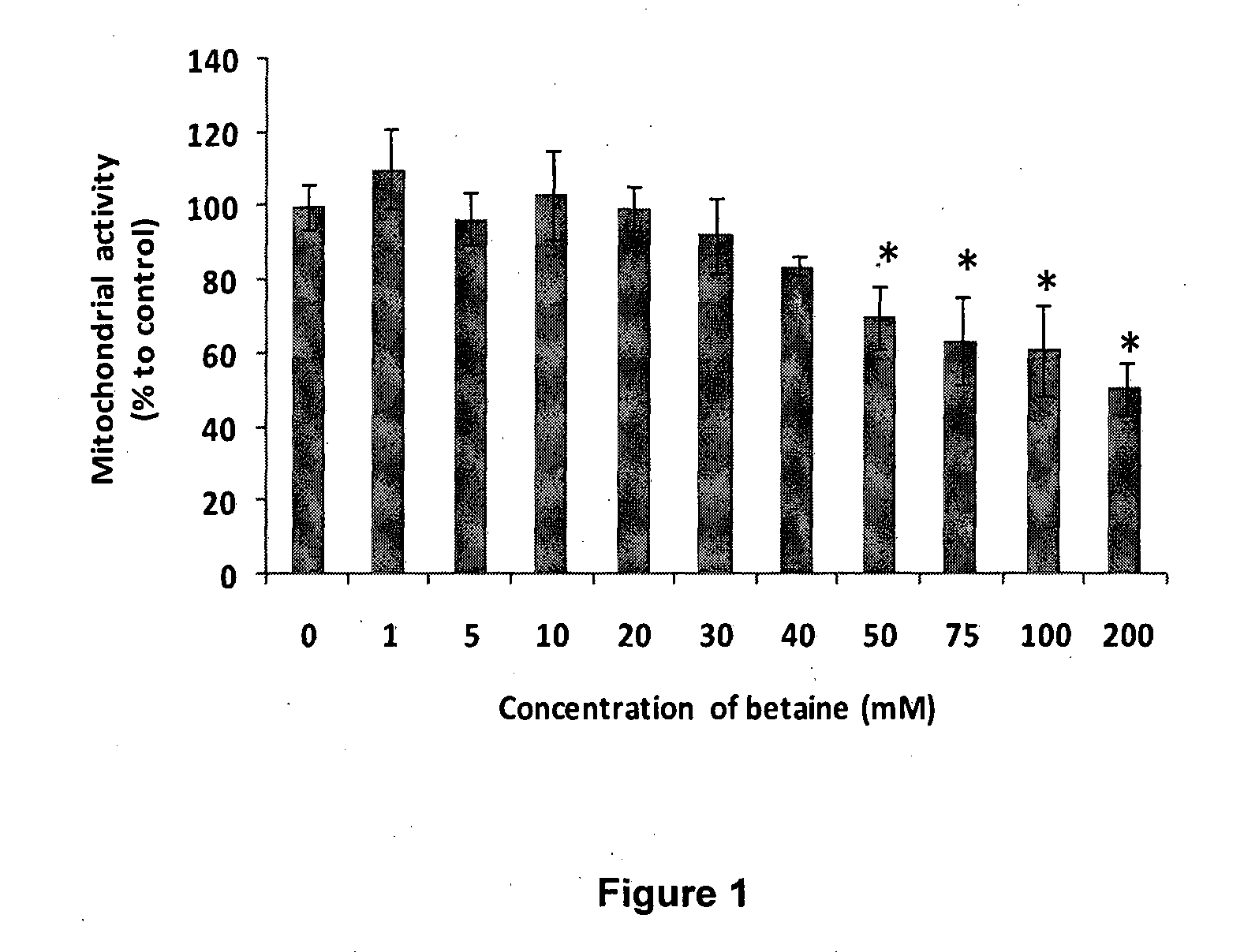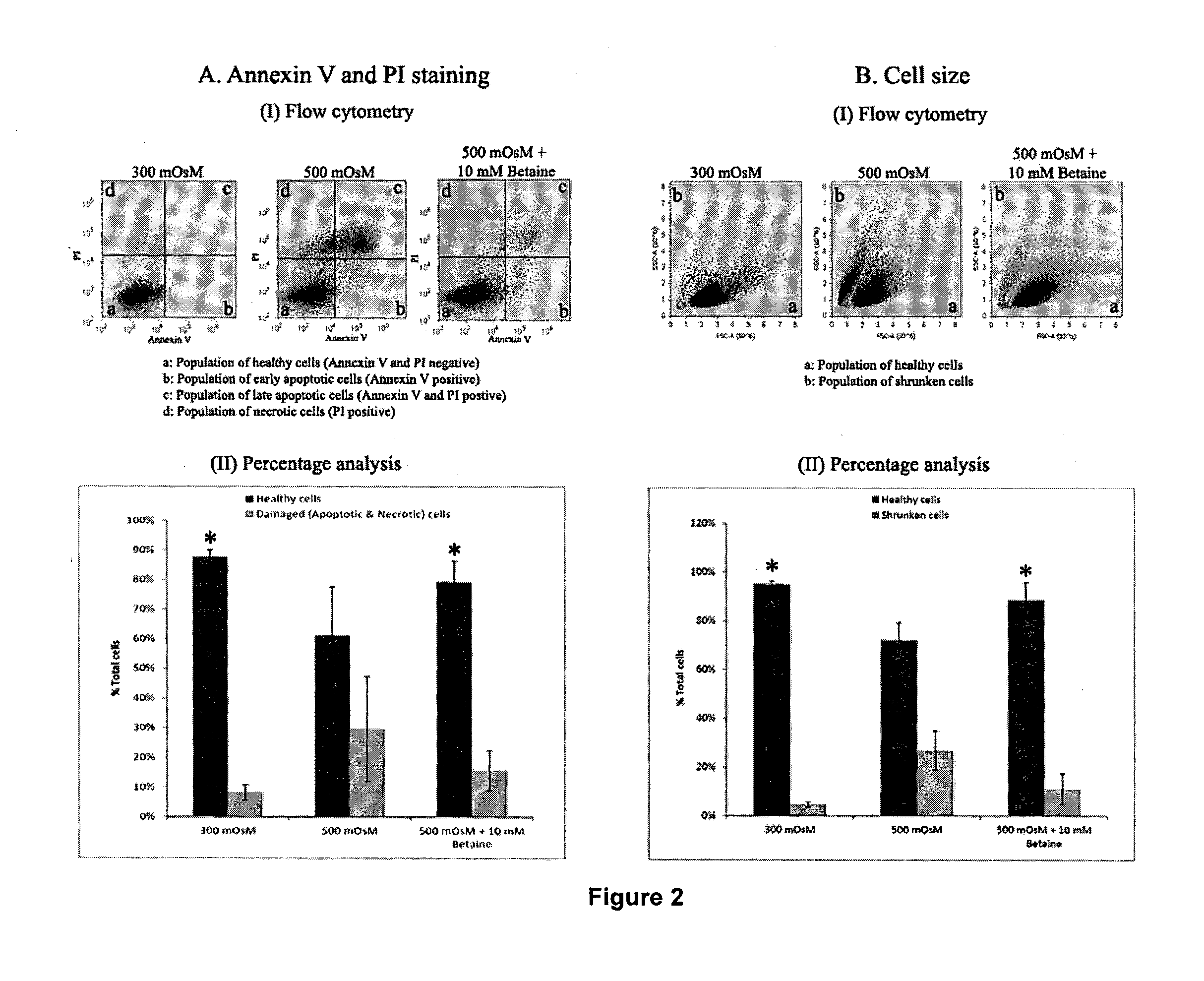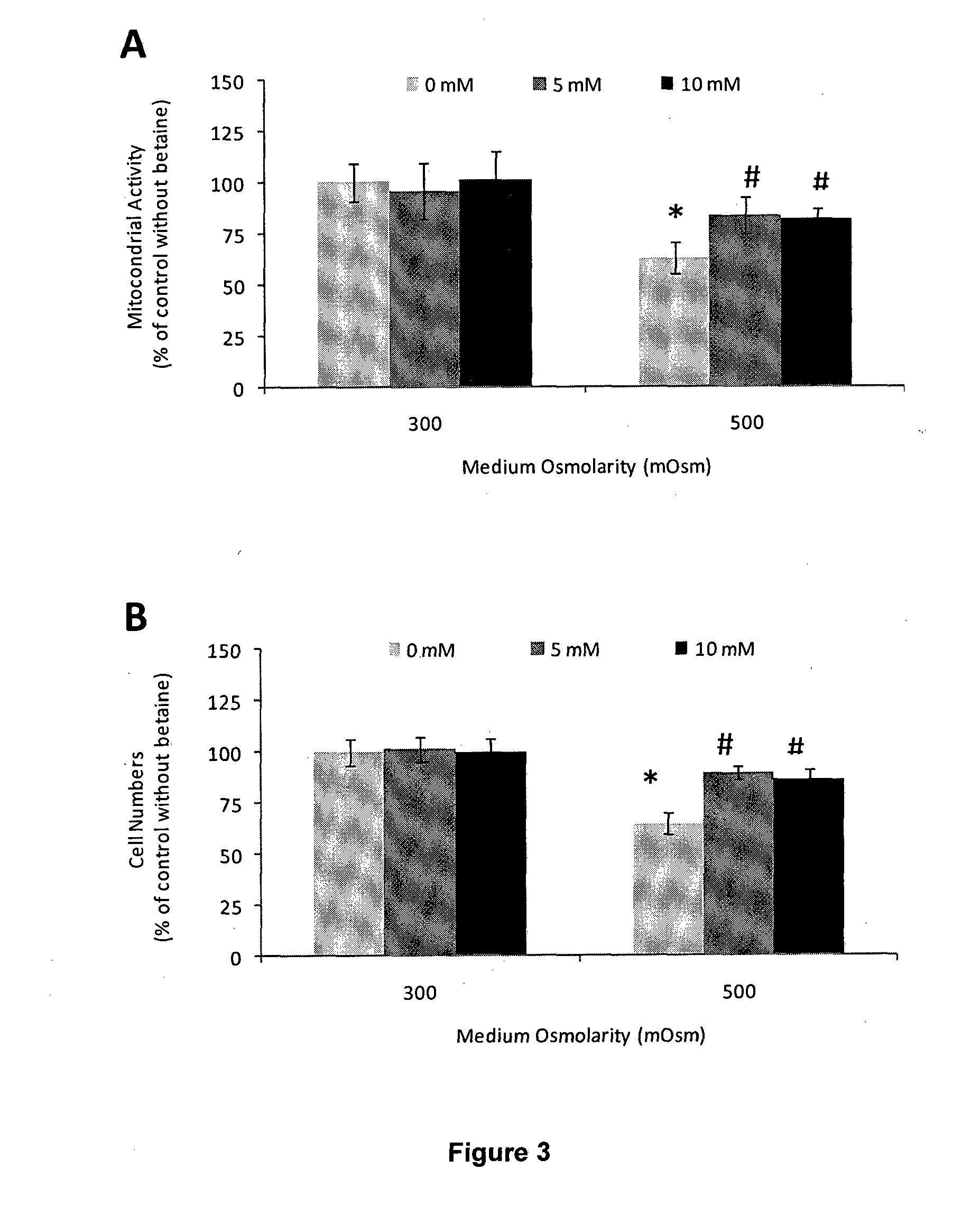Methods and compositions for reducing ocular discomfort
a technology of ocular discomfort and composition, applied in the field of methods and compositions for reducing ocular discomfort, can solve the problems of ocular discomfort and inflammation, cell death by apoptosis, and disruption of protein stability, so as to prolong the effect of reducing ocular discomfort, reducing ocular discomfort, and reducing ocular discomfor
- Summary
- Abstract
- Description
- Claims
- Application Information
AI Technical Summary
Benefits of technology
Problems solved by technology
Method used
Image
Examples
example 1
[0113]An immortalized human corneal limbal epithelial (HCLE) cell line (a kind gift from Ilene Gipson, Schepens Eye Research Institute, Boston, Mass.) was used in the study. HCLE cells were cultured as previously described (Garrett et al. Invest Ophthalmol Vis Sci 2008; 49:4844-4849). Briefly, the cells were maintained on plastic at 2×104 / cm2 in a keratinocyte serum-free medium (K-SFM; Invitrogen-Gibco, Grand Island, N.Y.), supplemented with 25 μg / mL bovine pituitary extract, 0.2 ng / mL epidermal growth factor (EGF; Invitrogen, Mount Waverley, VIC, Australia), and 0.4 mM CaCl2 and were grown at 37° C. in a 5% carbon dioxide atmosphere. To enhance nutrient composition, the cultures were switched at approximately 50% confluence to a 1:1 mixture of K-SFM and low calcium DMEM / F12 (Invitrogen), to achieve confluence. All the experiments involving the culture of HCLE cells were performed at 37° C. in a 5% carbon dioxide atmosphere unless otherwise indicated.
[0114]To determine the optimal c...
example 2
[0130]Flow cytometry analysis was performed to determine the physiological state of the cells (FIG. 2A) and cell volume (FIG. 2B) in response to hyperosmotic stress in the presence or absence of betaine. The representative images of the HCLE cells exposed to isotonic medium, hyperosmolar medium and hyperosmolar medium +10 mM betaine (FIG. 2A(I)) revealed that the total percentage of apoptotic and necrotic cells was considerably increased during exposure to hyperosmotic conditions as compared to isotonic conditions (from 8.24% to 29.63%) In the presence of the osmoprotectant betaine, the number of damaged cells was reduced dramatically (from 29.63% to 15.70%) This observation was further confirmed in the experiment summarised in FIG. 2A (II) which shows the percentage reduction in healthy cells under hyperosmotic stress compared to isotonic conditions (p<0.05). Addition of betaine to the hyperosmotic medium maintained the percentage of viable cells to levels similar to those observed...
example 3
[0139]Cultured HCLE cells were exposed to culture medium with or without carnitine (10 mM) at 300 mOsm (isotonic) and 500 mOsm (hyperosmotic) for 16 h. Flow cytometry was performed to determine the cell volume changes based on the forward and side scatter values detected.
[0140]The percentage of shrunken cells significantly increased when the cells were subjected to 500 mOsm hyperosmotic conditions (˜27%) compared with populations subjected to the isotonic 300 mOsm environment (˜5%) (FIG. 7). However, the percentage of these shrunken cells markedly reduced when the cells were treated with 10 mM carnitine in 500 mOsm hyperosmolar media (˜15%). Carnitine is able to regulate cell volume under hyperosmolar stress preventing subsequent apoptosis.
[0141]Cultured human corneal limbal epithelial (HCLE) cells were exposed to culture medium with or without carnitine (10 mM) at 300 mOsm (isotonic), 450 mOsm (moderate), and 500 mOsm (hyperosmotic) for 16 h. Induction of apoptosis was detected by ...
PUM
| Property | Measurement | Unit |
|---|---|---|
| molecular weight | aaaaa | aaaaa |
| molecular weight | aaaaa | aaaaa |
| osmolarity | aaaaa | aaaaa |
Abstract
Description
Claims
Application Information
 Login to View More
Login to View More - R&D
- Intellectual Property
- Life Sciences
- Materials
- Tech Scout
- Unparalleled Data Quality
- Higher Quality Content
- 60% Fewer Hallucinations
Browse by: Latest US Patents, China's latest patents, Technical Efficacy Thesaurus, Application Domain, Technology Topic, Popular Technical Reports.
© 2025 PatSnap. All rights reserved.Legal|Privacy policy|Modern Slavery Act Transparency Statement|Sitemap|About US| Contact US: help@patsnap.com



